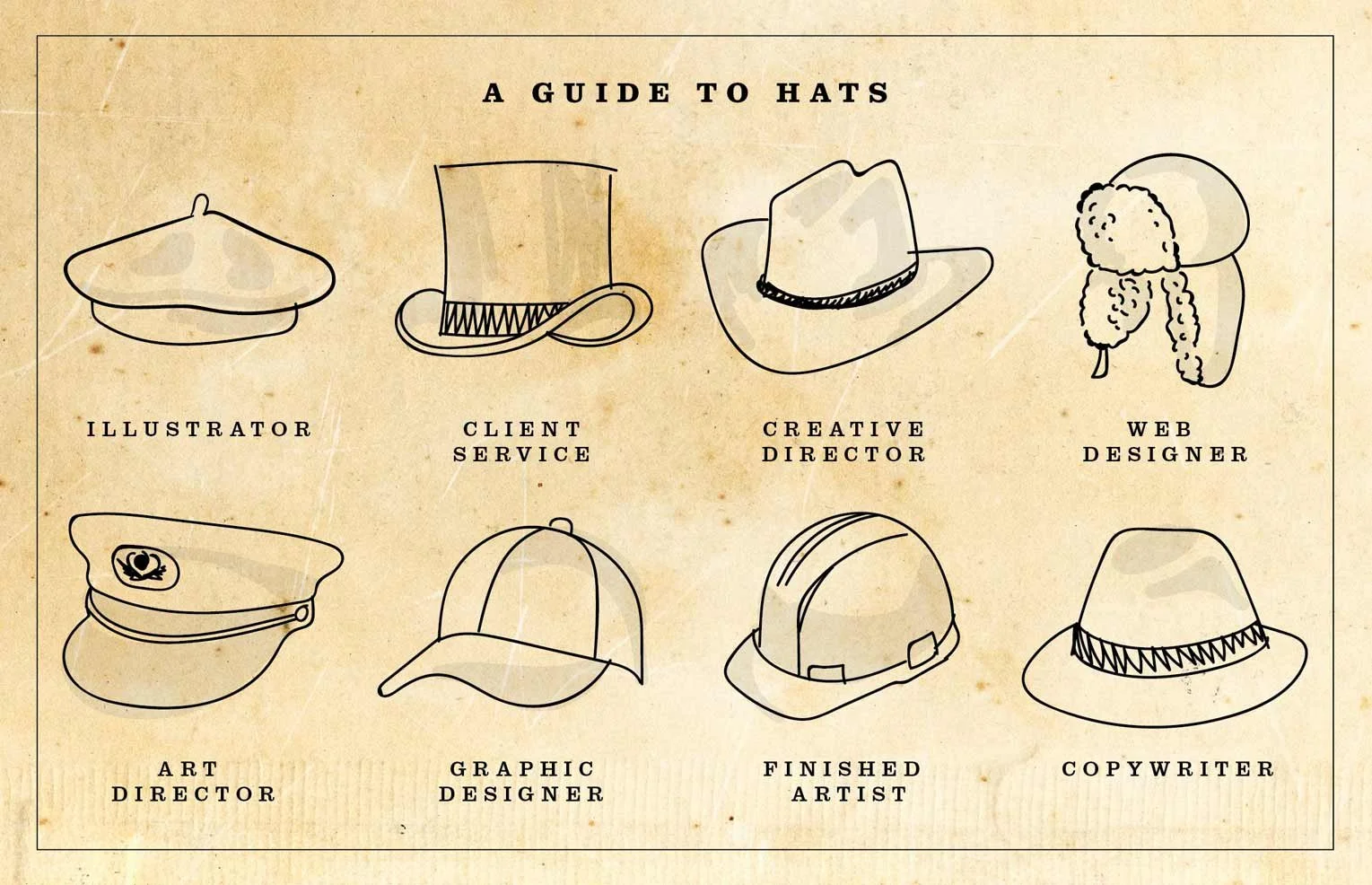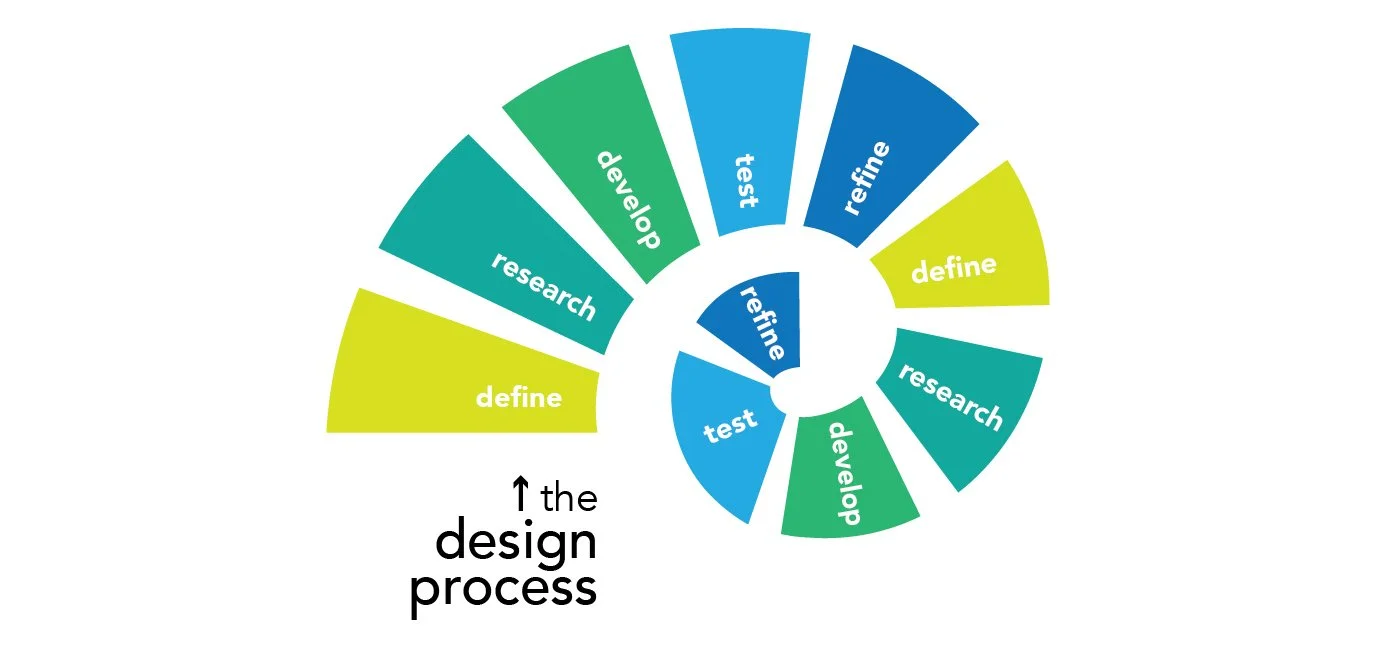Specialisation
The question of specialisation versus generalisation for people working in a creative field is a multi-faceted topic and one size definitely doesn’t fit all.
I know in bigger cities in Australia and around the world it is possible to specialise as a packaging designer, a branding designer, an illustrator or a publishing designer but my experience leads me to believe that it’s the generalists that survive. Well that's the truth here in ol’ Brisbane, Queensland. In all design studios I've worked I've needed to be able to change hats, sometimes very frequently.
As someone who has navigated a career in a relatively carefree way, welcoming and applying myself to any opportunity that knocks I've inevitably been placed in the category of generalist.
Does being a generalist imply that a jack of all trades is always a master of none?
Maybe? But I don't think so. I like the Bauhaus school of thought that a creative process can be applied to ANY problem and that I need to ready to adapt to suit the problem staring me in the face.
The process I am talking about will help solve any creative problem and it can be best explained in diagram form, you may find similar in your own research but this is basically it. The process starts with defining the problem, researching the subject matter so the problem is fully understood, develop ideas to solve the problem, testing your solution/s and refining it based on the test results. This process should be repeated until all aspects of the problem (defined at the beginning) are solved.
At the Bauhaus school in Europe around the 1920s all students including those studying graphic printing, architecture, fine art, photography, glass and mural painting and more all started their first year learning altogether where they studied elementary form and were taught to experiment. Here they learned to apply the process to solve ANY problem. This may seem obvious but I’m convinced the vehicle or format used to execute a solution should serve the problem and can't be defined by your own skill set.
Back to me, if I learn new skills or outsource the required skills for a given solution I would have ascertained the scope of this requirement in the research phase of the process. There’s a lot more to the Bauhaus school of thought if you’re interested, if you want to know more here is some info:
sitepoint.com/nailing-detail-bauhaus-design/
trydesignlab.com/blog/bauhaus-school-five-lessons-for-todays-designers/
One of my favourite quotes from the third link above says:
‘By going back to the fundamentals of colour, form, and meaning in design, we connect with the basic elements of our craft, and free ourselves to be more inventive and to respond authentically to the design problem that we are called to solve.’
Diversification
Who says a freelance graphic designer can’t also be a hair colourist or landscape designer at the same time? I asked Jake Reston a few questions on how diversification has worked for him.
Julia: You were freelancing even when I taught you at Design College of Australia (RIP) a few years ago and have continued freelancing as a designer. Recently you diversified and started working as a landscape designer as well which blows my mind. What reasons led you to make this decision?
Jake: Firstly, hey Juju, thanks for taking interest in my creative bridging! Well as life goes on and I become more knowledgeable about all areas of design I've felt a disconnection from graphic design. I come from an illustrative, hand drawing background and felt like I lost too much of that with graphics simply because we live in a digital world and most of our work resides there. I think I just want to learn more in every design field possible before I know what I really am good at or find deep love for. So, you can say I don't want to settle with becoming just a graphic designer, I want to design all things in life and I feel by absorbing knowledge from all areas I can calculate a better and broadened outcome.
Julia: How are you able to add your creative experience to landscape design?
Jake: Well applying my knowledge of balancing space, using shape, colour, tone and generally pitching an idea to a client has made things easier because everything comes from that professional knowledge. As I draw from a diversified field of choice it allows me to think just not as a landscaper but a designer on all mediums throughout any given space. I can even offer add-ons like signage, murals and interior artwork.
Julia: There would be physical benefits as well, sitting at a computer all day can be mentally tiring and not healthy physically. How do you find a balance between the two types of work you do?
Jake: I find myself wanting the other whenever I'm working on one. I am full time employed as a landscaper and work 8-10 hours in the sun every day then at nights and weekends I have fun on my drawing pads and laptop. My eyes don't enjoy any computer time and have deteriorated over the years which was also a factor when switching my design life. I felt like I could be trapped in a room behind a wall with endless cups of coffee and a twitchy eye meltdown. Now I look forward to that couple hours a night. My work now seems to be much more productive also where I can fit 8 hours of work into 4-5 hours.
Julia: Do you have a preference to which type of work you like doing over the other?
Jake: Definitely landscaping, seeing a physical space come together is where it's at. But I love all design! It all affects each other.
Julia: Do you see yourself diversifying even further as your career progresses? Is there a grand plan for the career of Jake Reston?
Jake: Honestly yes, anything and everything will help me. Eat a diversified diet and you will exude that. Eat just the same thing and you become really good eating and exuding that. From here I have years of learning until I feel like I'll be where I want. But could see myself running my own design company that has a broadened spectrum of design fields, not necessarily specialising in one but using design methods to produce considered quality outcomes. Being a director or overlooking creative projects is the dream but there isn't any rush for me. As I'm young I want to appreciate this level of life and when I hit my goals they'll be all the sweeter.
Julia: Could I ask you a practical question? When it comes to the accounting side of things, did you have to set up two businesses or do you work as a part/full time employee for the landscaping business and freelance through your own ABN?
Jake: I have a design business that was set up years ago and run all my contracting and freelance work through this. But I am also full time employed so I'm on full time wages. It seems like a lot but once you have routine and strive to do better it becomes pretty cruisey.
I really like Jake's approach and you can follow his work on Facebook or on Instagram @jakereston.
What does all of this mean for you?
I agree, it’s taken me awhile to get to the punchline but we’re finally here.
Within the scope of graphic design, it's possible to have a variety of work and income streams. I have a varied skillset that ranges from teaching design, onsite freelancing at design studios, managing my own design clients, creating a library of illustrations for sale on a stock imagery website and I’m always thinking of other things I might add to the list. Keep in mind that anything you consider adding to your own list will need nurturing and plenty of time to grow, you might also need to look at updating your qualifications. Work out what you will and won’t compromise on, for example, are you ok producing stock logos or should logo design should be tailored to the personality of a business?
If you’re wanting to know about different revenue streams then a quick google on the words ‘graphic design passive income’ or ‘freelance graphic design revenue’ is a good place to start.
To wrap it all up, I think being a generalist is pretty special.
Illustration © Julia Nielson 2017. First published Jul 12, 2017. Image credit: 'Old Paper', Jocund, CC Public Domain.


